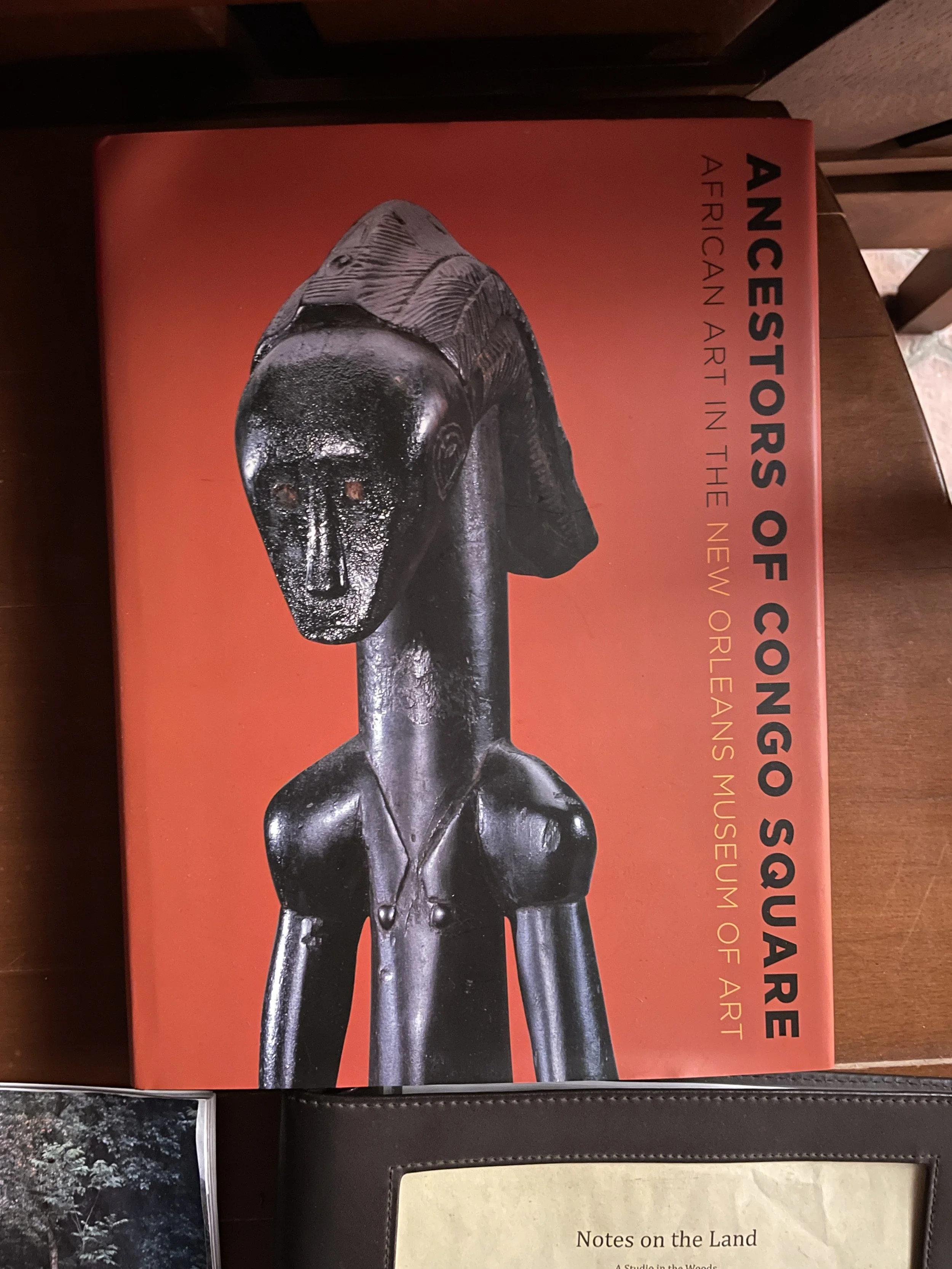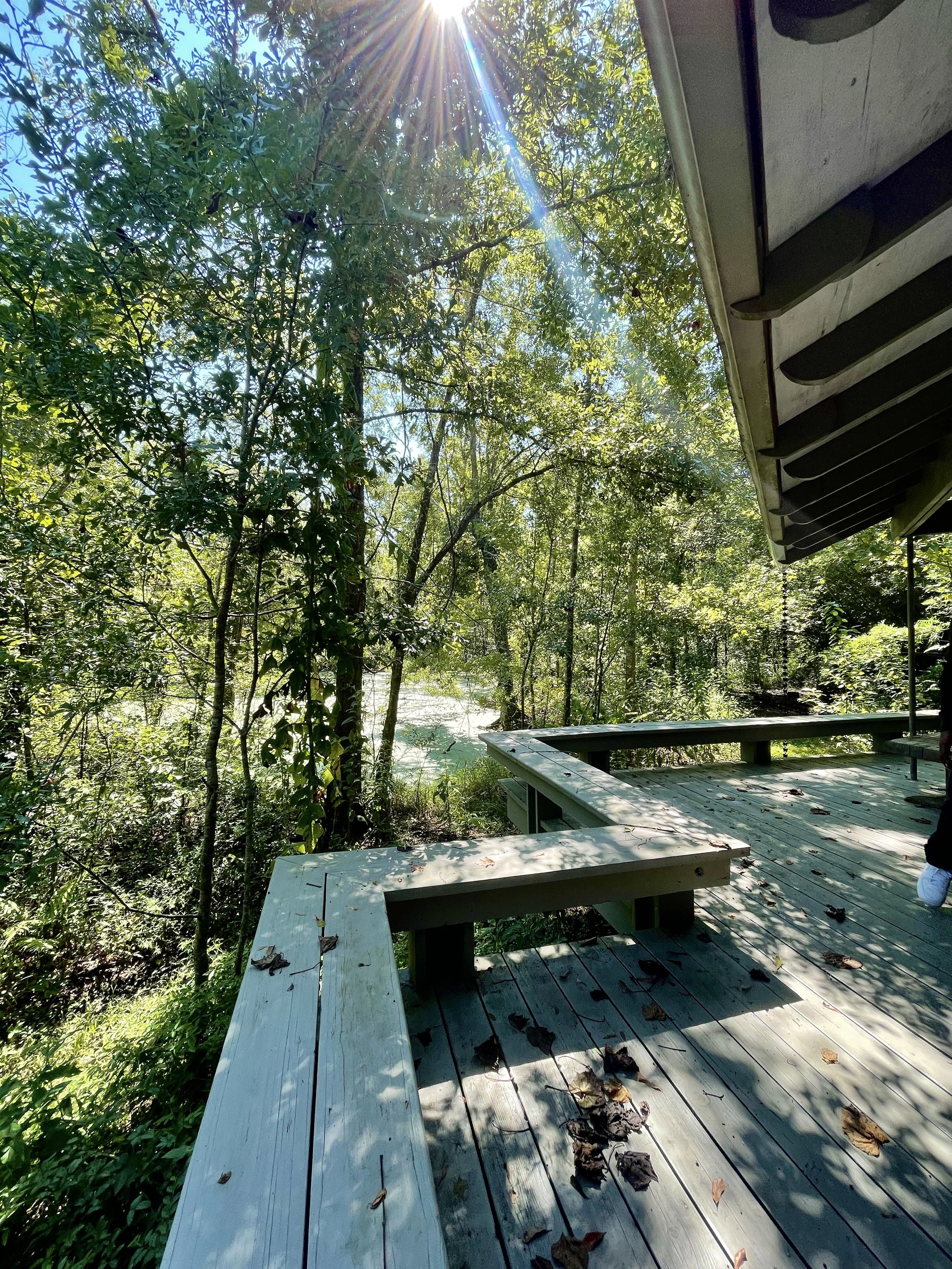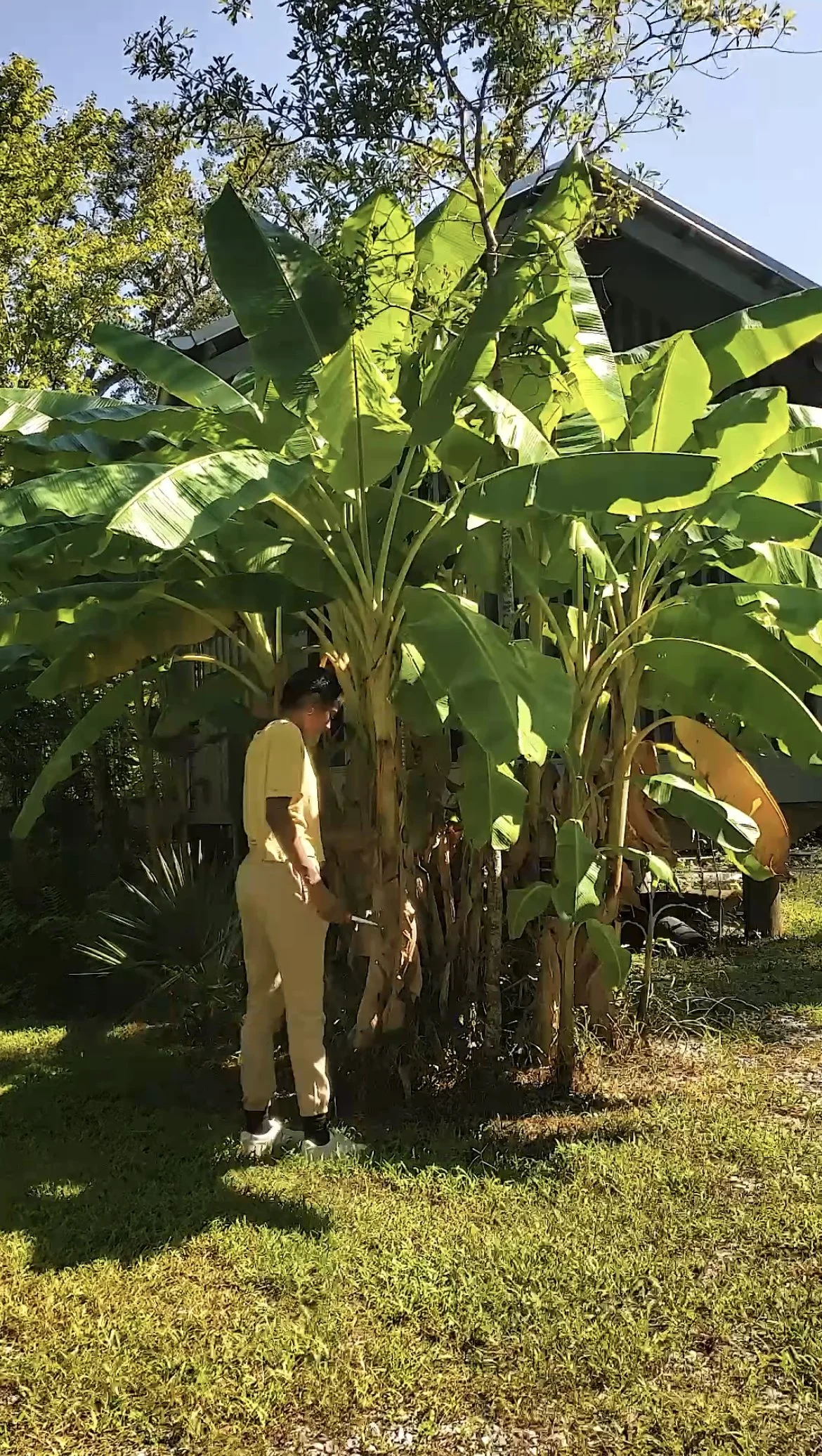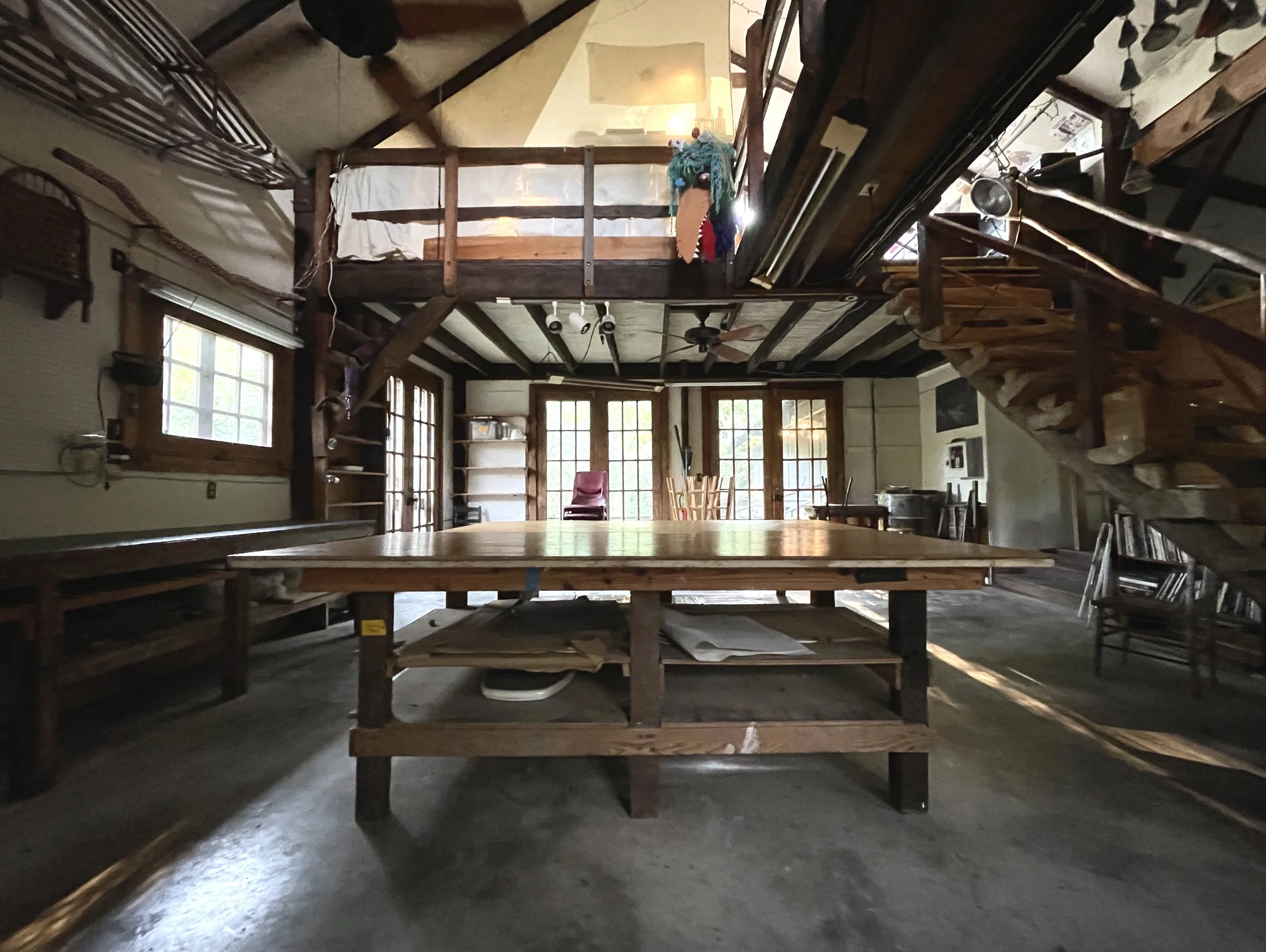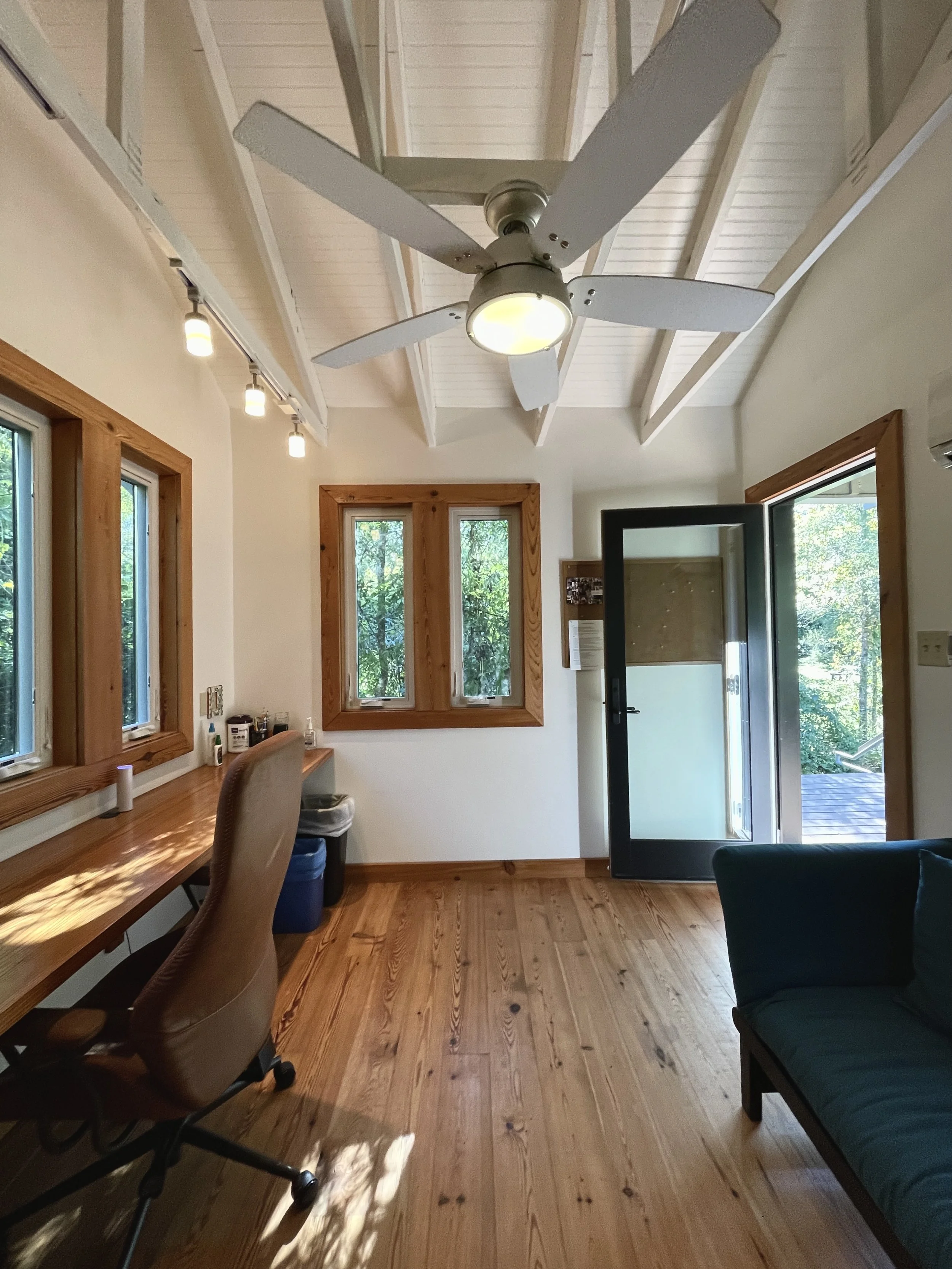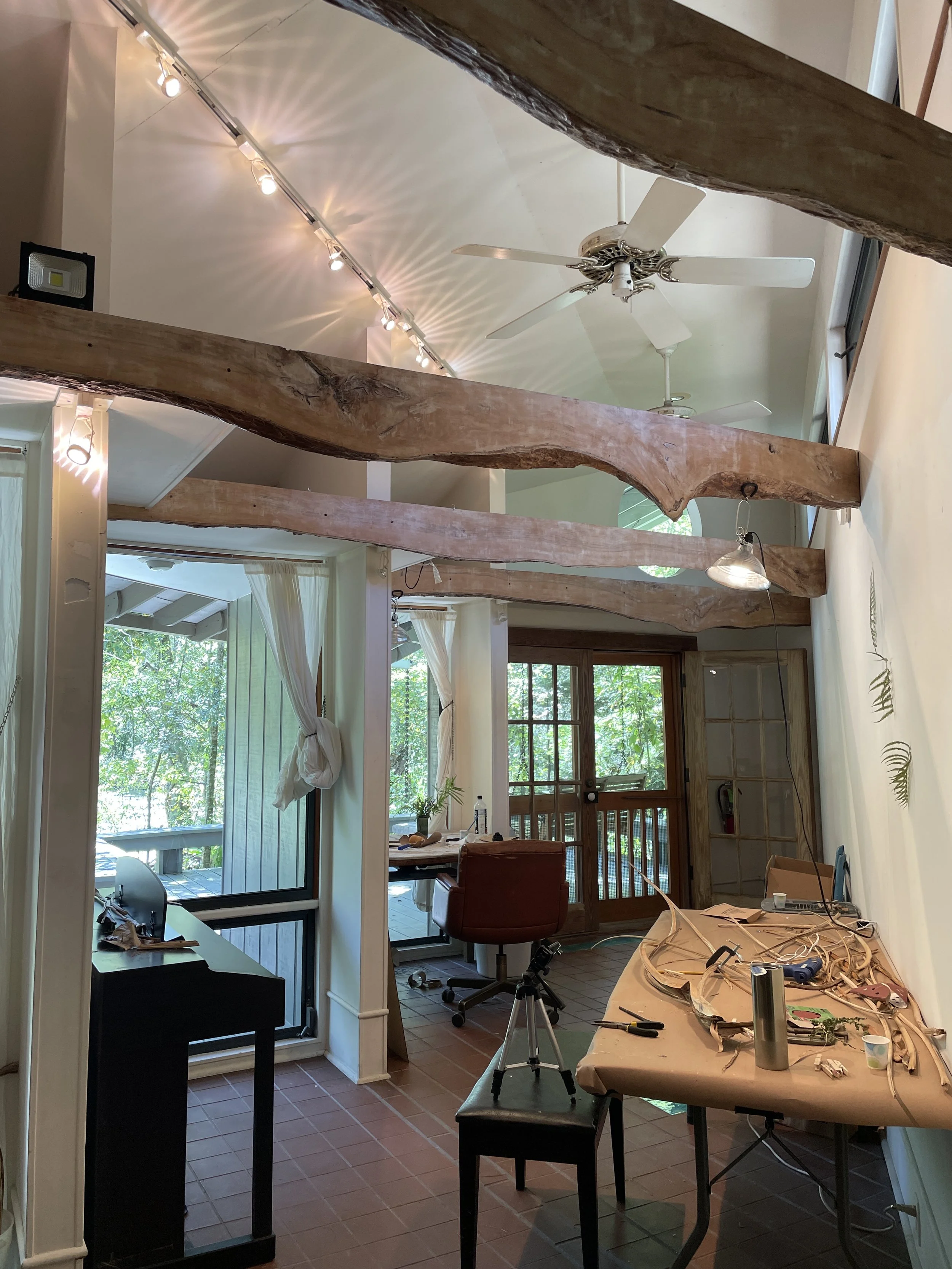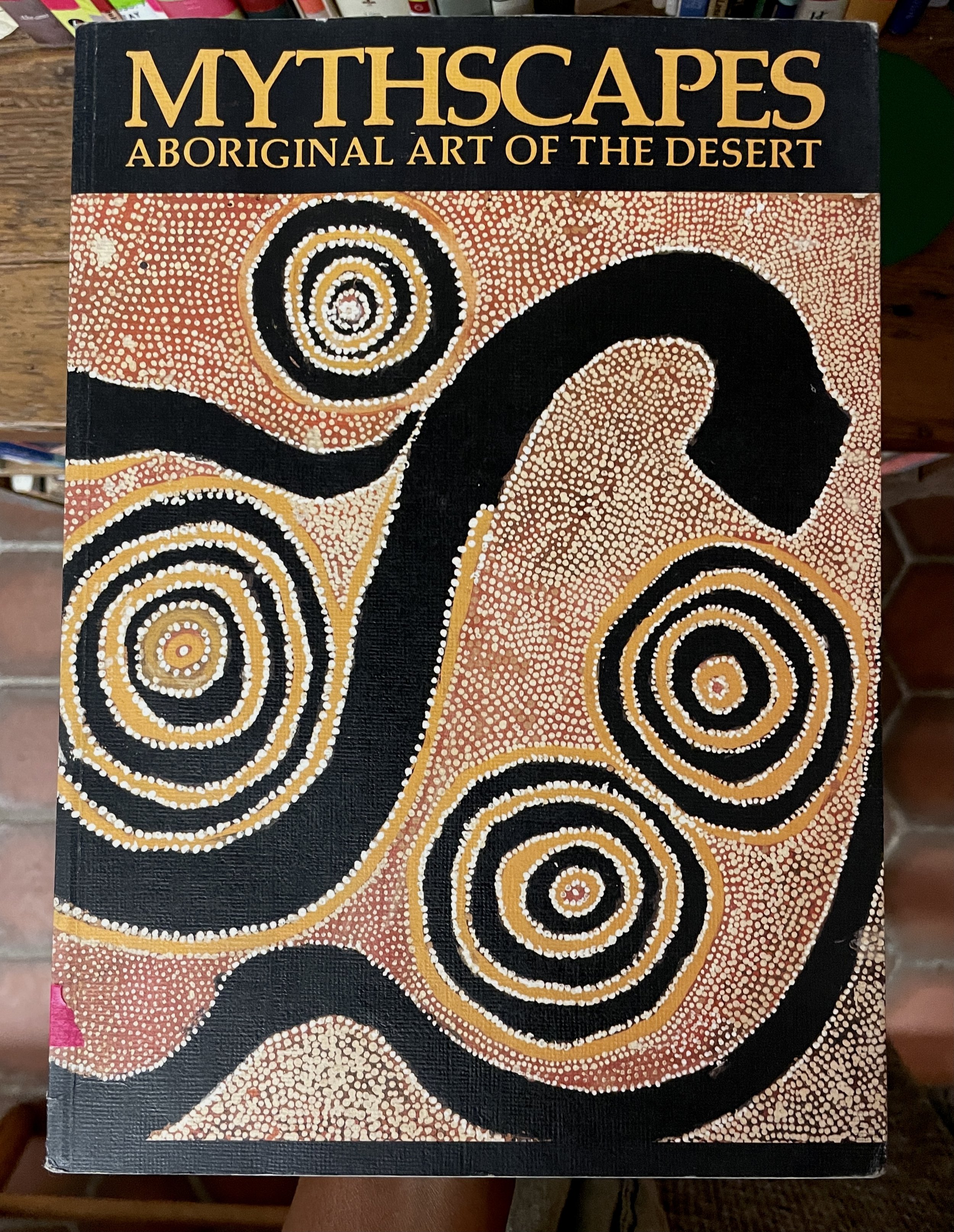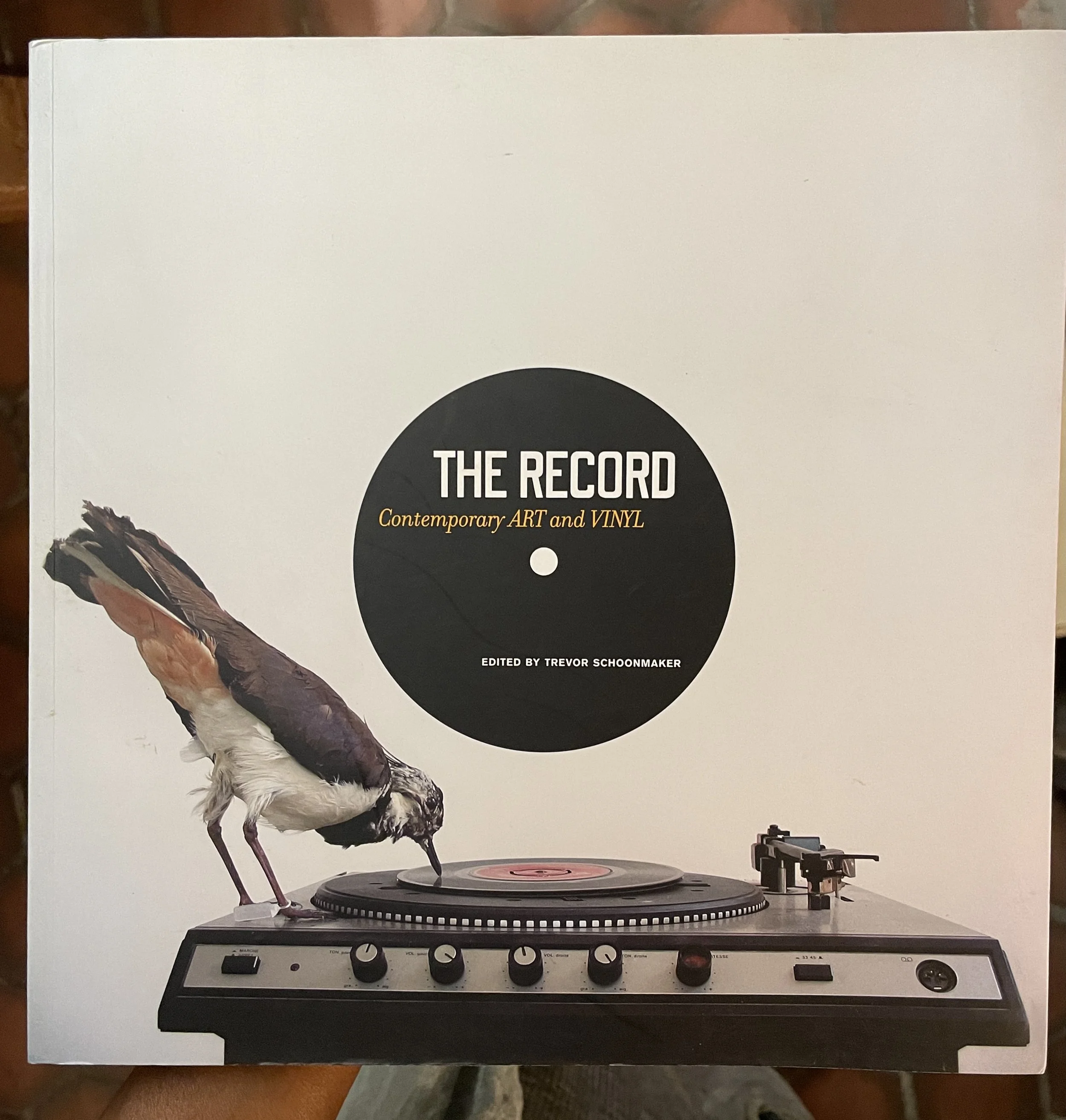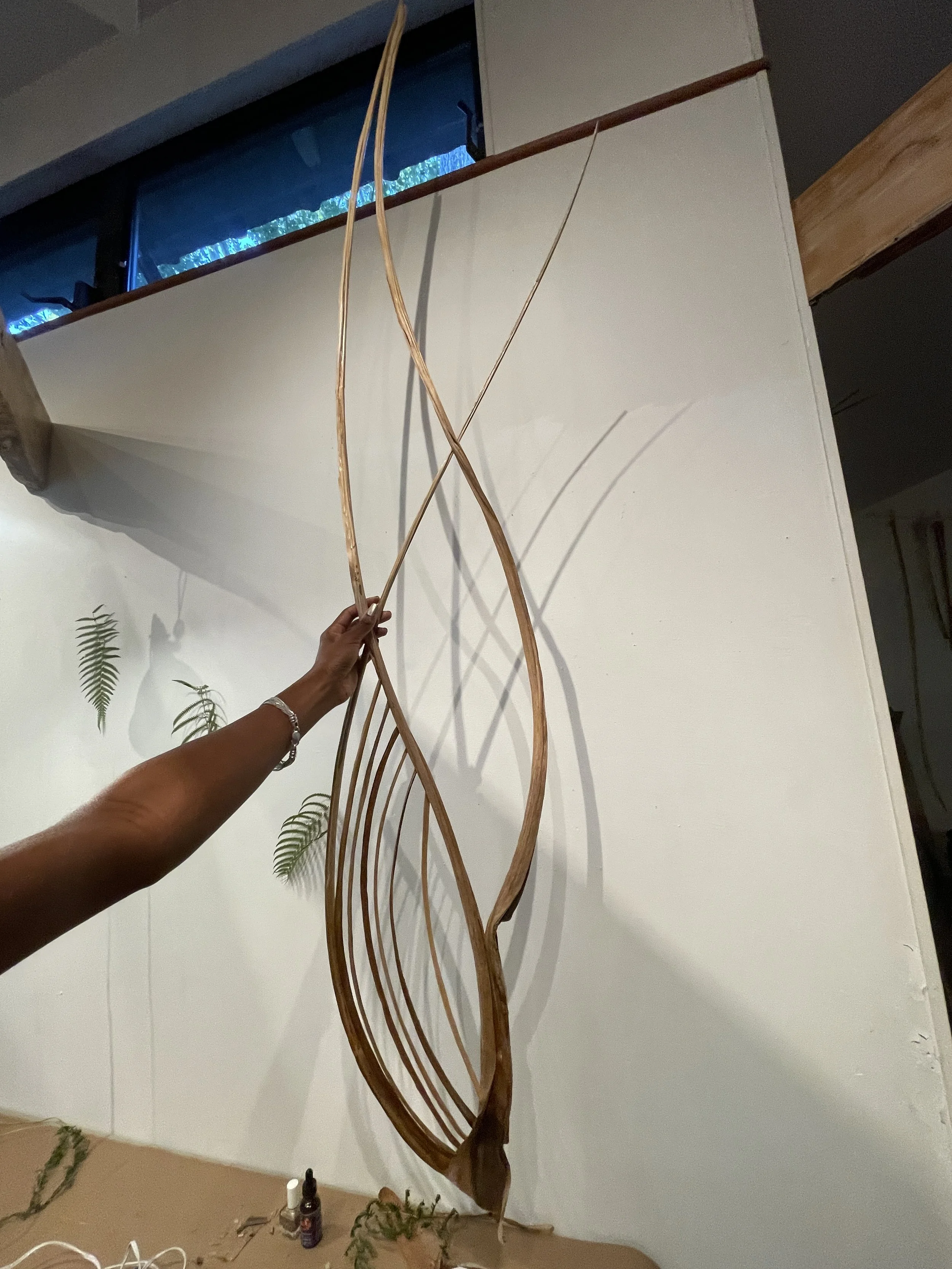A Studio In the Woods
Artist Residency
On Halloween Night 2021, I dreamt that I was overlooking acres of farm land where people were harvesting crops. When I woke up, I knew the land was mine and that I was entering my personal harvest season. The following morning I had the impulse to search for “grants for interior design professionals.” That spontaneous Google search led me on a months-long journey of submitting my work to various opportunities, cultivating in a paid, 2-week stay at A Studio In The Woods in New Orleans, LA. The Replenish Residency included an artist stipend, grocery reimbursement, private living space, private working space, excursion credit and a photography session. This is a recap of my stay.
Contents
Timeline
Application Submitted: 3/20/22
Application Deadline: 3/30/22
Acceptance: 6/8/22
Schedule Finalized: 7/20/22
Orientation: 8/18/22
Residency Start Date: 9/19/22
Residency End Date: 10/2/22
History
A Studio In The Woods is an arts and science organization located on 7 acres of forested land on the westbank of New Orleans, LA. The property consists of 5 buildings all a short walk from one another.
Up until 1682, when the land was seized by the French, it was inhabited and stewarded by people of the Washa and Chiwasha tribes, among others. It would eventually become the Delacroix Plantation where African and Afro-Indigenous people were enslaved. The plantation was first used for indigo and later, sugar cane. After Emancipation, the land lived many more lives, including one as a moonshine distillery, and was eventually purchased in 1969 by the current owners, the Carmichael’s. The land has since been used for forest research, community engagement and the empowerment of artists and scholars.
So my first artist residency was on tribal land that once functioned as a plantation. This all comes at a time where I’m in deep conversation with my own ancestors and spirit guides, who ensure I’m always in position to receive the info they’re transmitting. The collaboration between myself and my guides is generations old - seeds that were planted lifetimes ago have sprouted and are growing rapidly. So while on paper this residency was two weeks long, it was the culmination and continuation of lifetimes of work. This recap is my attempt to sort through and organize the feelings that came up.
Pleasant Surprises
The amount of space and privacy my work studio provided. I was assigned the Zig Zag Studio, a small enclosed building around 200 square feet with a spacious porch, a swing, large windows and layers of studio lighting. The building had two lockable entrances and overlooked a pond where I could turtle watch. Right away I fell in love with the space. The time I spent in there felt intimate and impactful. I’ll use that experience as a reference point as I visualize a more permanent work studio.
The size of my bedroom, bathroom and private balcony. The main house has two bedrooms - one upstairs, one downstairs. I had the upstairs bedroom which was furnished with a dresser, night stand, queen bed, large desk, display table, two chairs and a private balcony facing west. The bathroom and closet were hidden behind a door that blended in with the wall. I loved going back there because it felt like a secret hideout. The walk-in closet had plenty of storage as did the bathroom.
The fruit trees. I spotted a giant grapefruit tree, a baby lemon tree, a few different lime trees and most surprisingly, a persimmons tree. Persimmons came into my life and charmed me a few years ago, so getting to see them grow was a treat. I picked my share of limes and persimmons, using the limes for smoothies and the persimmons as bagel toppings. The grapefruit weren’t mature enough to be picked.
The book collection. View some of my favorite picks in the gallery below.
The Founder’s Studio and all of its tools and supplies. Artists are encouraged to bring their own supplies, but are permitted to use what they need from the Founder’s Studio. I spent a couple evenings hypnotized by the workshop, handpicking what I needed for my practice.
Pleasant Suprises
My ability to curate a routine that created momentum and prioritized my body’s needs. Each day I woke up, cleansed, meditated, moved my body and made breakfast. I started the work day between 10 and 11am and worked for 5-7 hours. I took short breaks throughout to use the bathroom, get a snack, refill my drink, have a conversation, etc. Around 5pm, I’d take a longer break to prepare and eat dinner. By this time, the staff had left for the day so the property was still. After dinner, I’d make my way back to the studio (around 7pm) and work another 2-3 hours before heading to my room to relax before bed.
The staff’s eagerness to support artists with resources specific to their needs. Staff members were happy to make their network available to artists during and after their stay. They were prompt with payment and immediately followed through with special requests. One night they hosted a dinner where artists, art enthusiasts, collectors and community members gathered to celebrate and support Rising Resident, Hye Sea (read more about her work below). She had the opportunity to petition the dinner attendees for info about woodworkers, storytellers and more.
Things I Didn’t See Coming
The adjustment period. I assumed I’d get straight to work when I got to the Woods. I didn’t account for the days I’d need to calibrate myself to the space. When you’re introduced to a new space, you’re introduced to everyone and everything that’s been in it. Considering the history of the land, plus my own stories that color the way I see the world, it took a couple days to adjust to this unfamiliar landscape.
The intimacy of the living space. Artists and staff share the kitchen. While artists are technically at home, staff members are on the clock at work. This created a weird dynamic for me because I don’t wanna have small talk when I’m home…or ever for that matter. After the first week, the initial awkwardness wore off a bit and conversations felt more fluid. Staff kept normal business hours, so by 5pm they were headed out and weekends were quiet. The close living quarters did enhance artist-to-artist interactions. The intimacy of the space allowed us to establish deep connections fairly quickly.
The land’s histories of slavery and violence are less than 350 years old - recent occurrences in the context of its 5000-year history. The full-disclosure of these stories by the organization is even more recent. So really, all of this just happened. It’s still fresh. I picked up on an uneasiness akin to the energy you feel after walking into a room where an argument or fight took place. It was dense and I was disoriented by it. Not until weeks after the residency ended was I able to comprehend that the land is much older than its slave stories. It’s not solely identified by what happened after 1682. But because the violent histories are the most recent, they’re the loudest, and they tend to suffocate the land’s true depth of beauty.
The necessary healing of these histories is two fold. Enough time has to pass for the density to dissipate and it has to be intentionally processed. When artists gather on the land, bring their gifts, talk amongst one another and help tell the stories of those who live(d) there, it helps air out the space. Still, spirit calls for restitution.
A disagreement. I got into a fight with one of my favorite people and it threw me off. I was up late crying and woke up drowsy with puffy eyes, then had to smile in the faces of staff members while I made my smoothie. Then had to keep working.
The noise across the street. There was a nearby factory of some sort that buzzed through the night and day. An interesting juxtaposition, sounds of the forest underscored by industrial din.
About the Other Artists
Nia Decoux is a writer and educator from a small town called Arnaudville, LA. During the week we spent together, Nia was working on her project Revolutionary Rest, which teaches adults and teens to navigate the dream world to receive ancestral guidance. As a fellow writer who keeps a dream journal and interprets my dreams to gain clarity in life, I was naturally drawn to Nia’s work.
Nia and I were experiencing something extremely new for the first time together and found other parallels in our conversations about relationships, childhood, spirituality, dreaming and the creative journey.
We shared a mutual tension with the short-term nature of our stay. We both tugged at the desire to be profoundly productive and the desire to practice the self-preservation we believe in (i.e. resting, reducing stress, etc).
Brandon Ballengee is a two-year resident working on a project called Searching For Ghosts of The Gulf. The project brings community members together to investigate species that have gone missing from the Gulf due to over-fishing, oil spills and climate/habitat changes. Brandon’s CV is extensive, dating back to the early 2000s and swaying between science and the arts. He happens to be connected to the same small town Nia is from, where he hosts an annual Halloween Art & Nature Festival via his own Atelier de la Nature.
Pictured: RIP Florida Pompano by Brandon Ballengee. 2014. Giclée print on handmade Japanese rice paper.
About the Other Artists
Hye Sea uses the sun and a magnifying glass to engrave detailed portraits into wood. Flying in from Maryland, she arrived during the second week of my stay and brought all the vibes with her: good music, good scents, good questions, good laughs. Within a few days, she became one of my favorite people on the planet. We laughed like when had been friends for decades.
Hye Sea and I confided in each other about the energy dynamics present on the land and what the land communicated to each of us. In a way, we got to compare notes on our experience. We also discussed travel, the creative journey, our visions/intentions, relationships, music, meditation, astrology, wine….the list goes on.
ChE is a multi-disciplinary artist largely responsible for the ongoing land acknowledgement of A Studio In The Woods. They hosted an orientation session where the history of the land and our connection to these histories as people of color were ceremoniously recognized. During this time, artists of color had space to talk about our personal histories and how they landed us in the places we stand. We also got to address the elephant in the room: THIS USED TO BE A PLANTATION. MANY LIVES WERE DESTROYED ON THIS LAND. And we’re just supposed to live here like its nothing? The orientation session provided much needed context and support.
How I’ll Prep Next Time
It’s important to gather information about the organization from various perspectives. The info I gathered before applying came from only one source: the organization itself - via their website, social media and Q&A session. Next time I’ll take a closer look at the organization’s affiliates, which media outlets give them press and how they represent themselves. It could also be beneficial to reach out to other artists who’ve participated in the program.
It’s important that prior to arrival, you establish a personal relationship with at least one of the staff members or position-holders in the organization - especially if you’ll be living on site. I interacted with the staff on Zoom and exchanged numerous emails with the residency coordinator, but we could have benefited from getting on the phone. Phone conversations break the ice and allow people to get familiar with each other’s rhythm. The relationship may have warmed up by the time the residency started. Instead, I did the “cold arrival” which was kinda awkward.
Erase expectations. I expected that I would leave this experience with two things: connections and more art for my portfolio. I got those things, but what I really walked away with is intangible. I got in-the-field exposure to the complexity of this path I’ve chosen to walk. I was shown the non-negotiable importance of keeping my stories safe and protected on this path, while still exercising freedom of expression. I was shown that to be in this world of art-making and making money off art, I need to move with a certain level of vigilance, conviction and deep reverence for my history.
Any new experience requires an adjustment period. And every new experience is only as rich as the emotions that accompany it. When planning for a residency, it’s important to account for emotional fluctuations. You might have an off day. You might have a conversation that throws off your rhythm. You might have a moment - like I did - where you’re questioning whether you’re worthy of being in the space. If your schedule is packed with productivity, down to the minute - like mine often is - there’s no space to flow with what comes. Next time I hope to be less rigorous about my schedule and more open to the intangible enrichment of the experience.





